Home » Construction » The Most Common Construction Site Risks
A construction site is an area where a house or building is being built, demolished or repaired. Those working at construction sites have to use large tools, heavy machinery, cranes to lift objects and transport from one place to another, work at heights and also in difficult environments where there are many hazardous materials already present. This makes the construction industry more prone to fatal accidents than any other sector. There are many construction site risks but there are also many ways of minimizing any untoward incident or occurrence.
Construction work involves great risk and the employers who make the labourers work know how difficult it is to manage the site effectively. The employers are also responsible for implementing appropriate accident prevention measures, providing the labourers with safety gear and adequate training on how to avoid any physical injury.
Below is a list of a few of the main hazards that a construction site worker can face on a typical construction site:
9 Most Common Construction Site Risks And Hazards
In Pakistan, you will find many people who are daily wage earners, hard-working labourers, who are the sole earners for their families. If the bread winner of the family undergoes a fatal accident or physical injury, the damage is not only limited to the labourer. This problem has a threefold effect: the labourer faces financial losses, they’re not able to feed their family and, lastly, when the labour force suffers, it adversely impacts the nation’s gross productivity levels.
Important fact: The construction industry employs around 8 percent of Pakistan’s total of 65 million labour force. That is a lot of lives at stake if the occupational hazards in the construction industry are not addressed fairly and justly. In this blog we have outlined some of the most common construction site risks that a mazdoor (labourer) encounters.
Check out the 9 most common types of health and safety hazards in the construction industry.
- Working on high-rise buildings
- Working with moving objects
- Eye injuries
- Hand arm vibration syndrome
- Electricity wires
- Manual handling of construction materials
- Hearing problems due to excessive noise
- Collapsing of trenches
- Airborne fibre materials that you can inhale
Before we discuss each of them in detail you should know that there are special safety gear equipment meant to be worn by on-site workers to protect them from any possible harm. Check out the most commonly used protective gear.
Personal Protective Equipment (PPE) Every Construction Site Worker Should Have
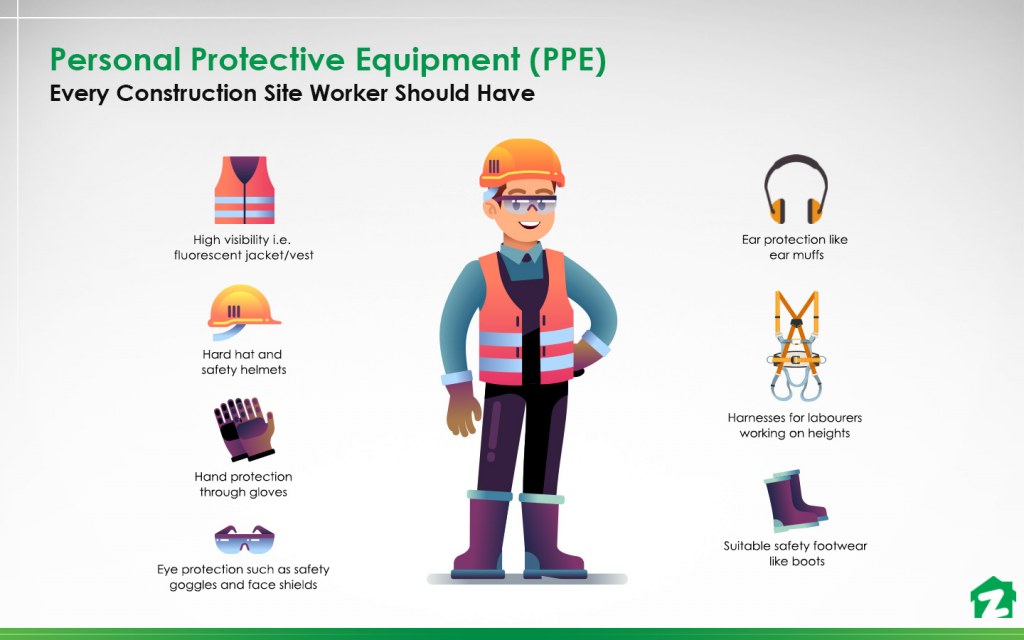
- High Visibility i.e. fluorescent jacket/vest
- Hard Hat and safety helmets
- Hand protection through gloves
- Eye Protection such as safety goggles and face shields
- Ear Protection like ear muffs
- Harnesses for labourers working on heights
- Suitable safety footwear like boots
Now, let us discuss each of the hazards and risks a worker may encounter.
Working for high-rise buildings
Construction site workers are at a much greater risk of potential falls and severe physical injuries than any other labourer. The mazdoor, who is appointed by a construction company is usually seen perched on top of high rise apartments, corporate buildings and multi-storey houses either carrying bricks, using concrete and cement on roofs, setting up glass panes or shoving wheelbarrows. There is quite a possibility if God forbid any mishap occurs the labourer’s life is at huge risk.

In a recent tragic incident in March 2019, six workers died at a construction site in Karachi, which raised alarm bells of the rampant inhumane practices especially in the construction industry.
As per a news report published in Dawn, “The workers were onboard a trolley and were setting up the glass panes on the 13th floor of the building when one of the two iron ropes suddenly snapped, causing all six workers to fall to their deaths. The trolley was fixed with two iron ropes instead of four, and anchored to the ground with heavy stones, instead of any proper machinery. None of the workers were wearing safety harnesses or helmets. They had complained to the contractor and owner about the safety risks and requested personal protective equipment, but no attention was paid to their words. The poor workers continued to risk their lives, earning just Rs1,000 a day, until they finally met their untimely end.”
As per the Health and Safety Guideline by Pakistan Poverty Alleviation Fund (PPAF), workers who are exposed to fall hazards at construction sites must be protected by guardrail, temporary floors, catch platforms and safety nets if:
- The access ways i.e. work platforms, or working surfaces from which they may fall is above 1.8m or more
- The work platforms is over water, slippery surface or any heavy machinery
- There is a vertical break of 48.2 cm then an access route either a ladder or any strong support should be provided
- A trolley is used at a certain height then proper harnesses and ropes along with safety helmets must be given to the workers
Working with moving objects
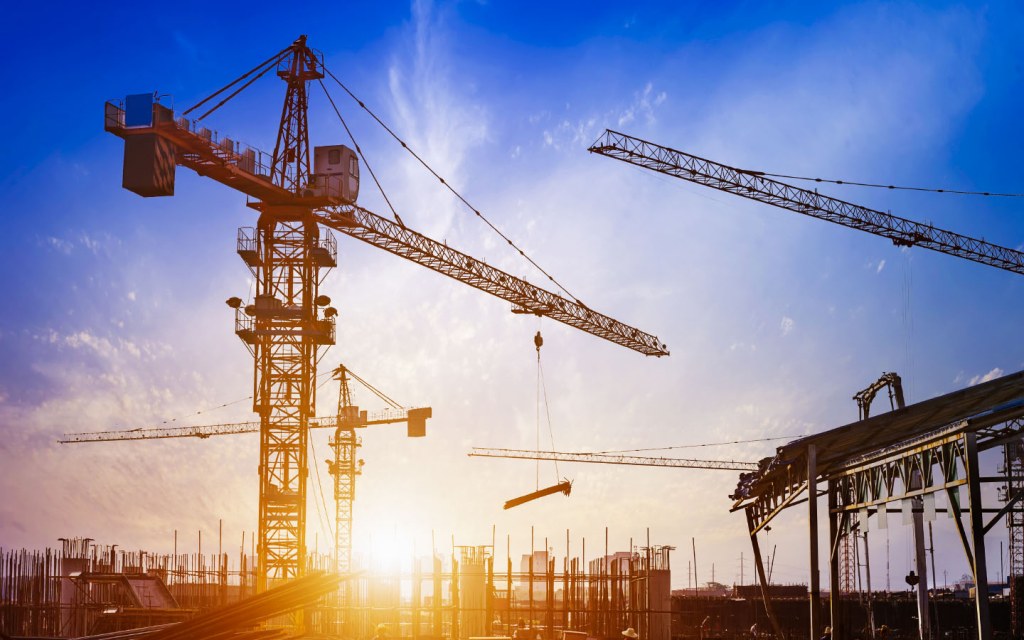
Occupational hazards in the construction industry are quite common as there are quite a lot of moving objects on the site that can pose a threat. There are overhead lifting equipment, vehicles that supply construction materials, heavy cranes hovering in mid-air and diggers all of which are constantly moving around. It is always good to reduce construction site risks by taking precautionary measures.
- Don’t be in close proximity to heavy machinery or moving object
- Be on a constant lookout if you think the crane is not stable report it at once and move away
- Always wear Personal Protective Equipment (PPE), for example the high visibility jacket also known as fluorescent jacket that can ensure that the workers are seen from afar.
Eye injuries
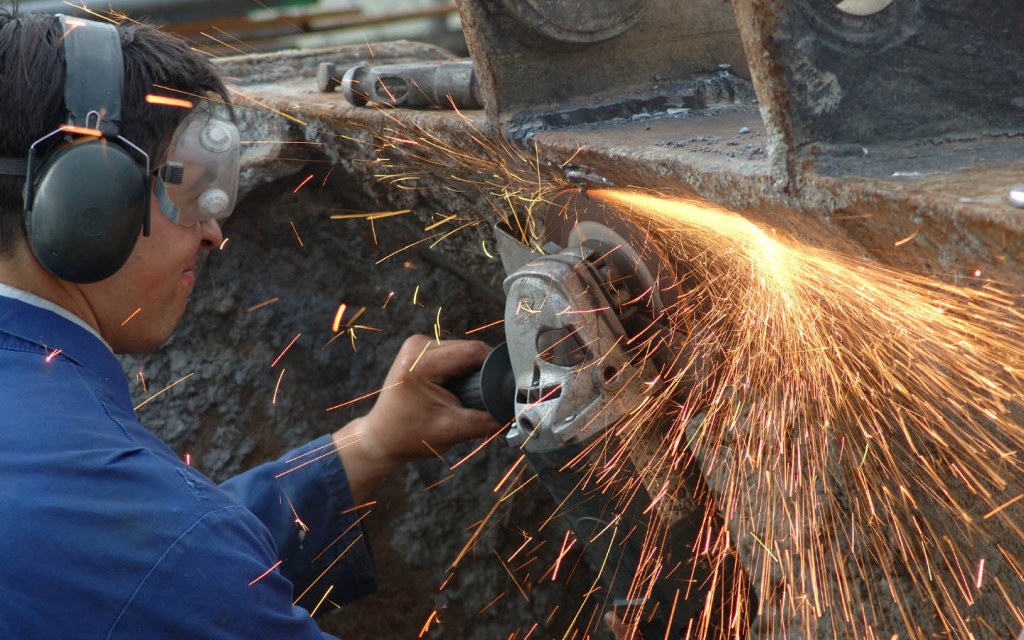
One of the major construction site hazards are the eye injuries due to long hours of work at a welding and cutting site. Apart from this there are eye injuries that can be caused by micro dust particles present at the site. It is important to wear eye shields and face shields when working on a welding project or when in contact with harmful and dangerous materials on the construction site.
These are some of the precautionary measures every labourer must take before taking up a dangerous task involving the eyes:
- All construction site workers must use eye shields or safety goggles, safety helmets to protect their eyes from welding rays, flying sparks and pieces of molten metal.
- It is also important to remove any combustible material which is lying close to a welding site.
Hand Arm Vibration Syndrome or the Blue Finger
HAVS or Hand Arm Vibration Syndrome is a (quite) painful disorder that’s caused by damage to blood vessels, nerves and joints. The major cause of this syndrome is the prolonged use of hand-held power tools, which includes vibratory power tools and also the ground working equipment.
HAVS can be prevented though if you take the right safety and control measures. But if the damage is done, it cannot be reversed. The effects of the disease include the inability to do fine work, and working in cold temperatures can also sometimes trigger severe pain in the fingers. Therefore it is also referred to as the Blue Finger Syndrome.
The following precautionary measures must be taken to avoid the Blue Finger Syndrome.
- Properly inspect the vibratory machine before using it
- Use proper safety gear like gloves and arm support safety helmets before using the machinery
Electrocution hazards
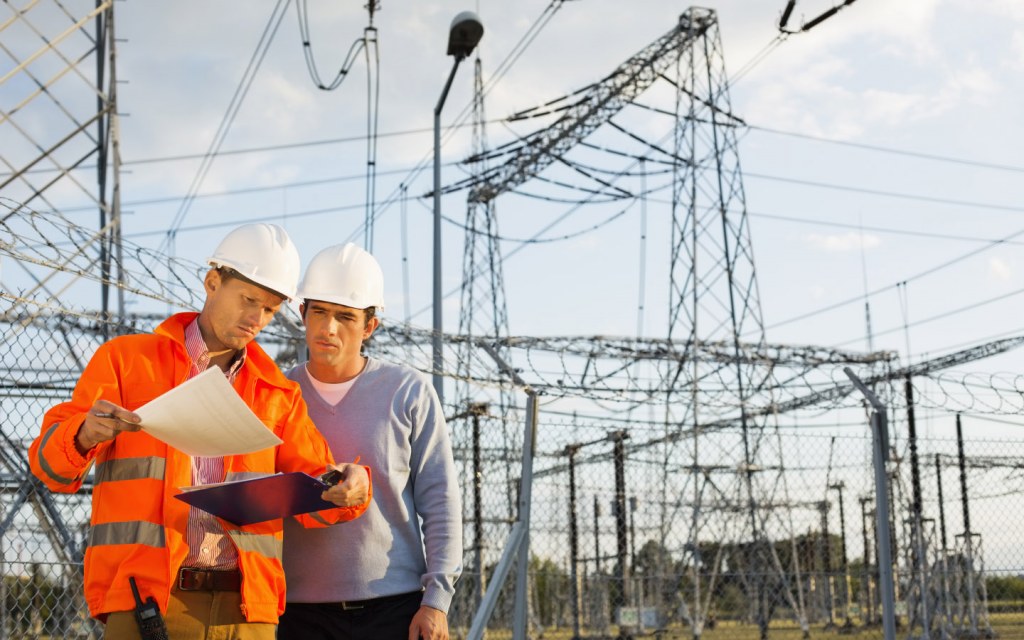
Working near electricity power lines and cables poses a great threat to the construction site workers. Labourers who are not eligible to work as electricians should refrain from working on sites involving electrical work. Safety training must be compulsory for all workers to deal with any mishap or electrocution. Conduction materials shouldn’t be in proximity to power lines so as to avoid electrocution hazards.
Precautionary measures taken against electricity hazards at construction sites
- Transformer banks and high voltage equipment must also be protected from unauthorized access
- A sketch of the electricity power distribution at the site should be given to each worker informing the location, voltages, protection of circuits and ways to disconnect the power source
- Live parts of electricity wiring must be protected
- Frayed, patched or oil-soaked electric cords must never be used
Manual handling of construction materials
On any construction site, materials and equipment are routinely moved around. If it is done manually, some risk is involved. There is a constant need of adequate training, to attempt competency tests, and also to have a proper license for handling and such dangerous materials and equipments at site.
Hearing problems due to excessive noise
Excessive noise at construction sites is a common issue. It’s also one that is often overlooked, probably because it lacks shock value as its effects manifest rather slowly as opposed to a fall or similar accidents where you discover consequences almost immediately. However, this difference does not make noise pollution any less dangerous. If a worker is having hearing problems due to excessive amount of noise at work, then they are already prone to many fatal accidents as they might not be able to hear properly.
Following precautions must be taken to avoid any injury
- Wear ear muffs to protect ears
- Stay away from sources of excessive noise
- A noise assessment should be done from time to time
Collapsing of trenches
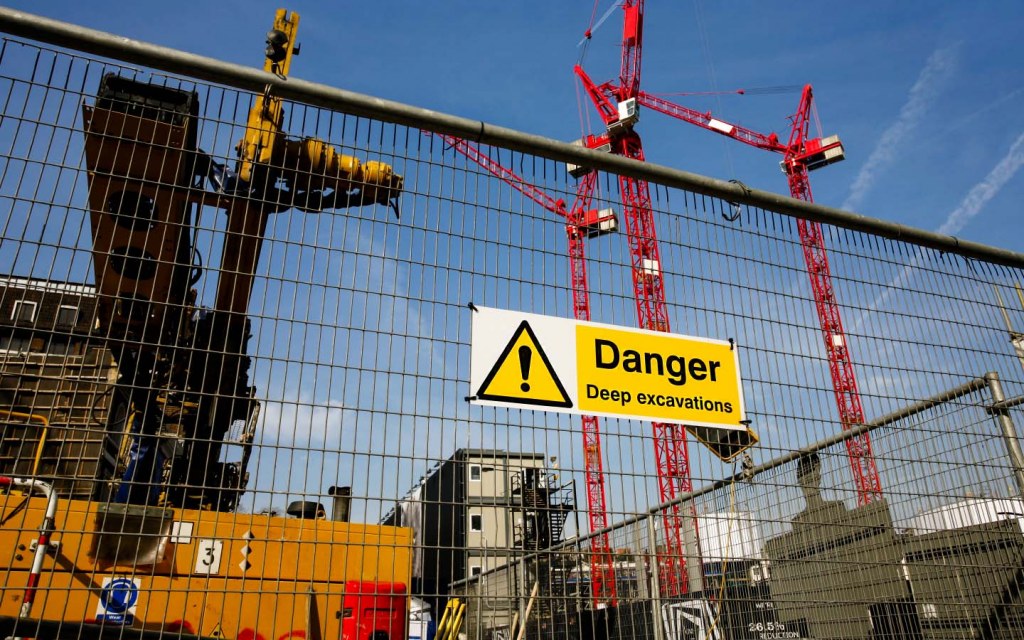
Collapsing of deep excavation sites or trenches with workers inside it is also quite a common construction site risk. These are accidents that are waiting to happen. Almost every year, there are serious injuries and fatalities result from collapsing trenches and excavations. These collapses usually take place at demolitions sites, partially completed buildings and scaffolding.
Some of the widely known precautions for collapsing of trenches should be taken into account before the work starts. This is how you can check for a possible fallout.
- Have a proper support for the trench
- Ensure the deep excavation site or trench is completely secure.
- Do inspect the site just before the working shift start and also at the end of the shift to avoid any mishap.
Airborne fibre materials that you can inhale
There is a lot of dust produced on construction sites that comprises fine particles, which are quite often toxic in nature. Dangerous fumes sometimes emitting from certain areas of construction are also a potential health risk for workers. This can pose a great health risk for the workers, damaging their lungs leading to diseases such as asthma, chronic obstructive pulmonary disease and silicosis.
Here is how you can prevent it:
- Make sure there is proper ventilation
- Wearing of protective masks and face shields
- If there are any dangerous fumes, workers should not be allowed to enter any confined space under such circumstances
Safety measures to be taken on construction sites
These are some of the most common rules of conduct to avoid construction site hazards. The Pakistan Poverty Alleviation Fund (PPAF) has been established as an autonomous not-for-profit company by the government of Pakistan. The PPAF has come up with an extensive list of rules to be followed by contractors and labourers both to avoid construction site risks and hazards.
1. Authorized workers must check in/check out and report to construction supervisors
2. Under certain circumstances, visitors can come to the site only with an authorized person.
3. Hard hats should be worn at all times at all times at the construction site by all workers or visitors
4. Leather shoes or heavy boots must be worn at all times by anyone visiting the construction site, be it workers or visitors
5. The recommended minimum distance of 100 feet must be maintained from all construction equipment
6. Avoid walking under heavy machinery hoisted in mid-air
7. Take a good look at all the warning signs at any part of the construction site and do not walk in a no-go area
8. Be aware of any tripping hazards and watch every step you take
9. Never dump any discarded material at a construction site
10. Must wear ear plugs if there is excessive noise
11. All workers must wear Personal Protective Equipment (PPE) to avoid any construction site hazards.
So, this was a comprehensive list of construction site hazards that employers must take into consideration when hiring workers. Make sure you follow these safety measures at construction sites to avoid any mishaps.
If you are building a house make sure the workers you hire follow these safety guidelines. Also, if you are worried about how much construction costs would incur on your house then do read our detailed piece on the construction cost of a 5 marla house. Stay tuned to Zameen blog the best construction and real estate blog in Pakistan. Do write to us at blog@zameen.com



